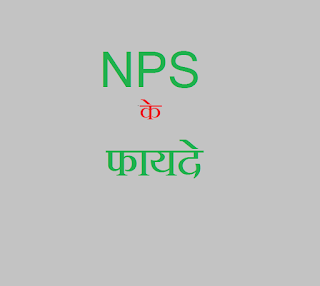NPS Pension Scheme Benefits
DTC (Direct Taxes Code) has prepared a revised draft. Under this revised draft, NPS is assumed to be brought under the EEE (exempt-exempt-exempt) method of taxation. This means that investors get a tax exemption at all the three stages of investment, appreciation and withdrawal. It makes it more attractive.
Today, EPF has the EEE (exempt, exempt and exempt) tax structure while NPS lies under EET that is exemp - exempt and tax.
This has made NPS less popular amongst the employees because when an employee would withdraw his amount from the former, he has to pay tax on 20% of his final amount, according to the tax slabs.
NPS Tax Structure
At the time of retirement an employee has to invest 40 percent of his NPS amount to annuities. This amount shall be used for giving him pension. Out of hundred percent an employee can get home 60 percent of his NPS amount. In this 60 percent only 40 percent amount will be tax free and the remaining 20 percent will be taxable. The tax will be levied on the income tax slab rates at the time of his retirement.
For example:-
Let, at the time of retirement a person has total 100 rupees in his NPS account. He will have to invest 40 rupees compulsorily to get pension. 40 rupees he can take his home without paying tax. 20 rupees will be taxable when he takes it home,
If the Union finance minister corrects this tax inequality , most of the salaried person should prefer the NPS because it has earned better returns, says investment experts.
"The way it is structured, NPS is the best retirement product," says Suresh Sadagopan, a Mumbai-based financial planner.
The Union Cabinet of India has passed a Bill that says pension fund managers to offer minimum guaranteed return options to NPS subscribers. This will come into force when Parliament passes this PFRDA Bill. Then there should be a minimum return guarantee in NPS. If it is being fixed by the government, we will find more investments in this particular scheme.There is no specific interest rate that has been set for the NPS scheme currently.
The main reason is - the scheme chooses different investment options. NPS scheme has earned interest rates of up to 12% to 14%, depending on the scheme chosen. It is safe to assume that the rate may not be as high, but will be higher than any other saving schemes and plans.
The interest rate for NPS or New Pension Scheme is not set. Over an extended period, the returns earned have the potential to be higher than the guaranteed returns assured by the provident fund scheme.
NPS is an "obvious" choice for investment managers also because it has consistently delivered double-digit returns in the past five years.
In the central government plans, the LIC Pension Fund, the SBI Pension Fund and the UTI Retirement Solutions have returned 11.38%, 11.37% and 11.23% respectively.
The three fund managers have delivered similar returns for state government plans too.
If an employee had invested 5000 rupees in a month for five years, he would have an amount of over Rupees 4 lacs on his total investment of Rupees 3 lakh.
On maturity, the NPS subscriber needs to buy an annuity plan with 40% of the money compulsorily.
Out of the remaining 60% corpus, he can withdraw or take home 40% without paying any tax.
Actual tax will be imposed on the 20% of his entire corpus or NPS amount.
To bring National Pension Scheme (NPS) equal benefit with Employee Provident Fund (EPF), the Pension Fund Regulatory and Development Authority (PFRDA) has recently sought similarity of taxation between the two retirement products in the Union Budget.
The cut in the EPF rates comes at a time when the returns from the National Pension System (NPS) have been robust. The government bond and corporate debt plans of the NPS have earned high returns of around 13.5-18.5% over the past year.

